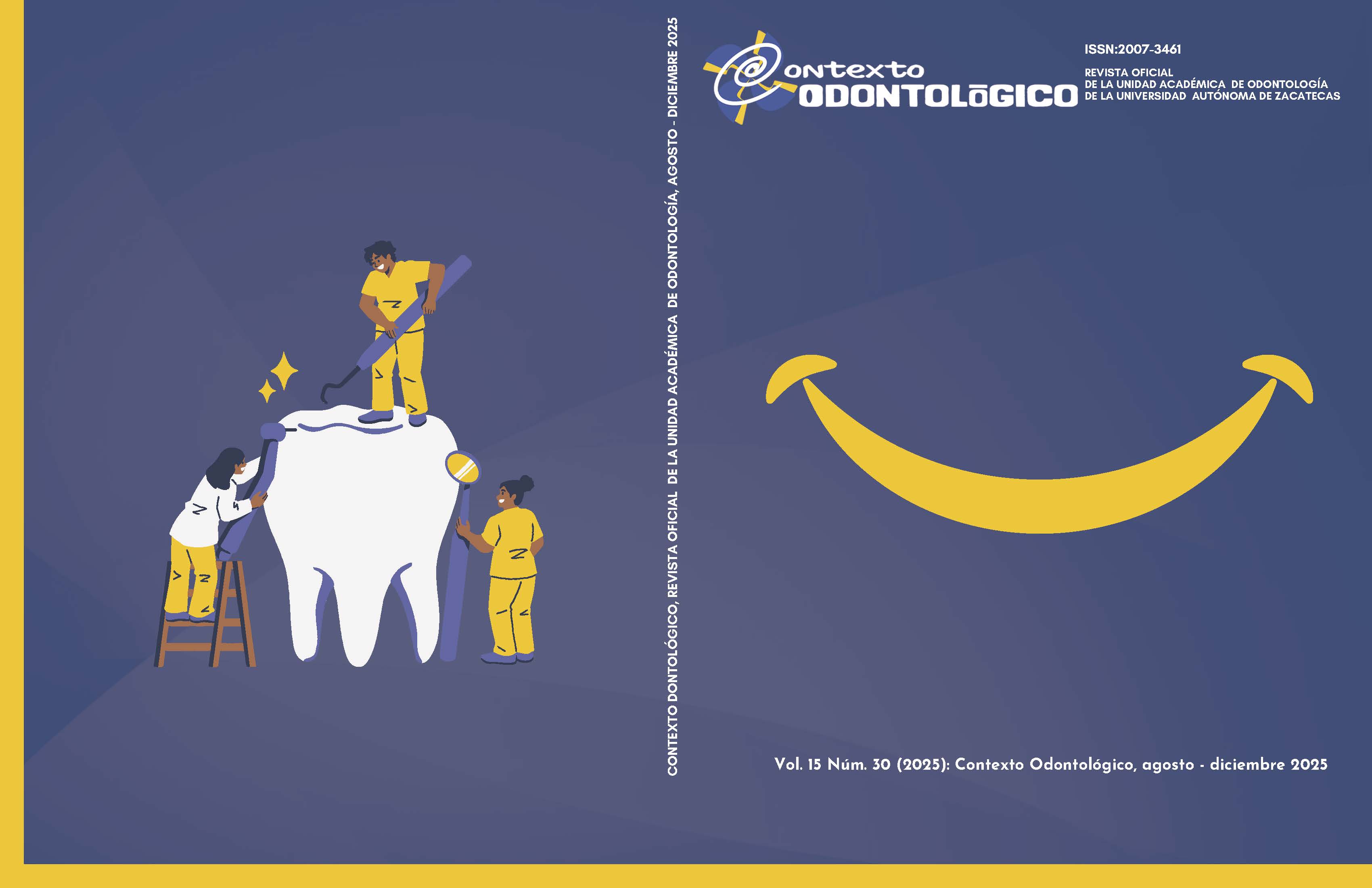Riesgos de los Implantes de Titanio; la Zirconia como Alternativa/Risks of Titanium Implants; Zirconia as an Alternative
Published 2025-10-23
Keywords
- implantes,
- titanio,
- zirconia,
- complicaciones
Abstract
El Titanio (Ti) es uno de los materiales más utilizados en el campo de la implantología tiene una larga historia de uso debido a sus múltiples ventajas, que incluyen comodidad, ausencia de daño en los dientes adyacentes y efectos clínicos significativos. Sin embargo, el fracaso de la osteointegración, la reabsorción ósea y la periimplantitis limitan su aplicación; una de la principales preocupaciones son los reportes de casos individuales a la toxicidad. Tambien pueden ocurrir reacciones de hipersensibilidad o reacciones inflamatorias en los tejidos del huésped producida por la corrosión de los implantes debido a los cambios electroquímicos en la superficie , por la limpieza mecánica o micromovimientos en las estructuras del mismo.
Downloads
References
Deppe, H., Wolff, C., Bauer, F., Ruthenberg, R., Sculean, A., & Mücke, T. (2018). Dental implant surfaces after insertion in bone: An in vitro study in four commercial implant systems. Clinical oral investigations, 22, 1593-1600.
Jorge, J. R. P., Barao, V. A., Delben, J. A., Faverani, L. P., Queiroz, T. P., & Assunçao, W. G. (2013). Titanium in dentistry: historical development, state of the art and future perspectives. The journal of indian prosthodontic society, 13, 71-77.
Kim, K. T., Eo, M. Y., Nguyen, T. T. H., & Kim, S. M. (2019). General review of titanium toxicity. International journal of implant dentistry, 5, 1-12.
Mombelli, A., & Lang, N. P. (1998). The diagnosis and treatment of peri‐implantitis. Periodontology 2000, 17(1), 63-76.
Mombelli, A., Hashim, D., & Cionca, N. (2018). What is the impact of titanium particles and biocorrosion on implant survival and complications? A critical review. Clinical oral implants research, 29, 37-53.
Olmedo, D. G., Nalli, G., Verdú, S., Paparella, M. L., & Cabrini, R. L. (2013). Exfoliative cytology and titanium dental implants: a pilot study. Journal of periodontology, 84(1), 78-83.
Olms, C., Yahiaoui-Doktor, M., & Remmerbach, T. W. (2019). Contact allergies to dental materials. SWISS DENTAL JOURNAL SSO–Science and Clinical Topics, 129(7/8), 571-579.
Prado, A. M., Pereira, J., Henriques, B., Benfatti, C. A., Magini, R. S., Lopez-Lopez, J., & Souza, J. C. (2016). Biofilm Affecting the Mechanical Integrity of Implant-Abutment Joints. The International journal of prosthodontics, 29(4), 381-383.
Rakic, M., Grusovin, M. G., & Canullo, L. (2016). The Microbiologic Profile Associated with Peri-lmplantitis in Humans: A Systematic Review. International Journal of Oral & Maxillofacial Implants, 31(2).
Roehling, S., Schlegel, K. A., Woelfler, H., & Gahlert, M. (2019). Zirconia compared to titanium dental implants in preclinical studies—A systematic review and meta‐analysis. Clinical oral implants research, 30(5), 365-395.
Sadowsky, S. J. (2020). Has zirconia made a material difference in implant prosthodontics? A review. Dental Materials, 36(1), 1-8.
Safioti, L. M., Kotsakis, G. A., Pozhitkov, A. E., Chung, W. O., & Daubert, D. M. (2017). Increased levels of dissolved titanium are associated with peri‐implantitis–a cross‐sectional study. Journal of periodontology, 88(5), 436-442.
Sakka, S., Baroudi, K., & Nassani, M. Z. (2012). Factors associated with early and late failure of dental implants. Journal of investigative and clinical dentistry, 3(4), 258-261.
Sidambe, A. T. (2014). Biocompatibility of advanced manufactured titanium implants—A review. Materials, 7(12), 8168-8188.
Sridhar, S., Wilson Jr, T. G., Valderrama, P., Watkins-Curry, P., Chan, J. Y., & Rodrigues, D. C. (2016). In vitro evaluation of titanium exfoliation during simulated surgical insertion of dental implants. Journal of Oral Implantology, 42(1), 34-40.

